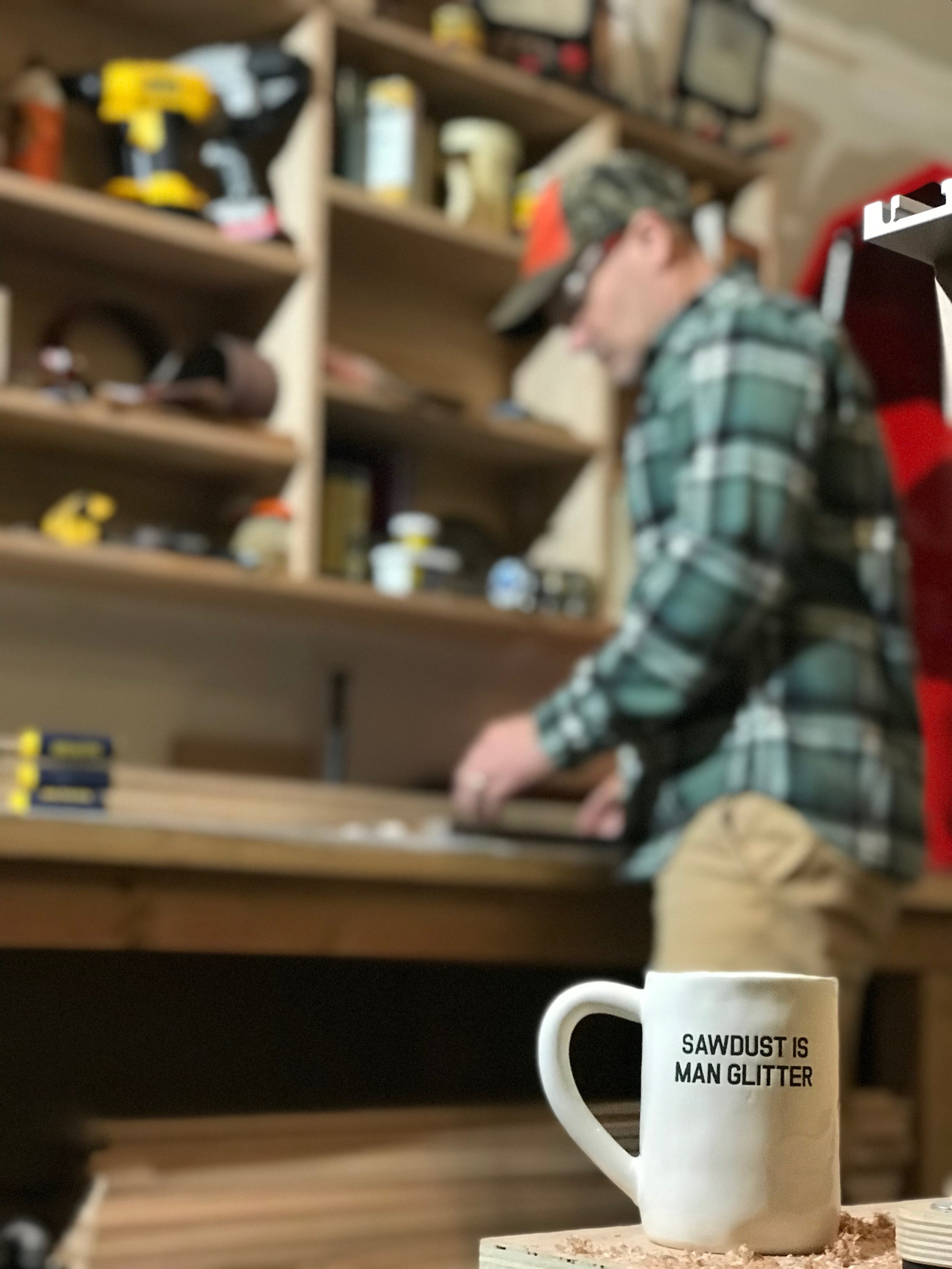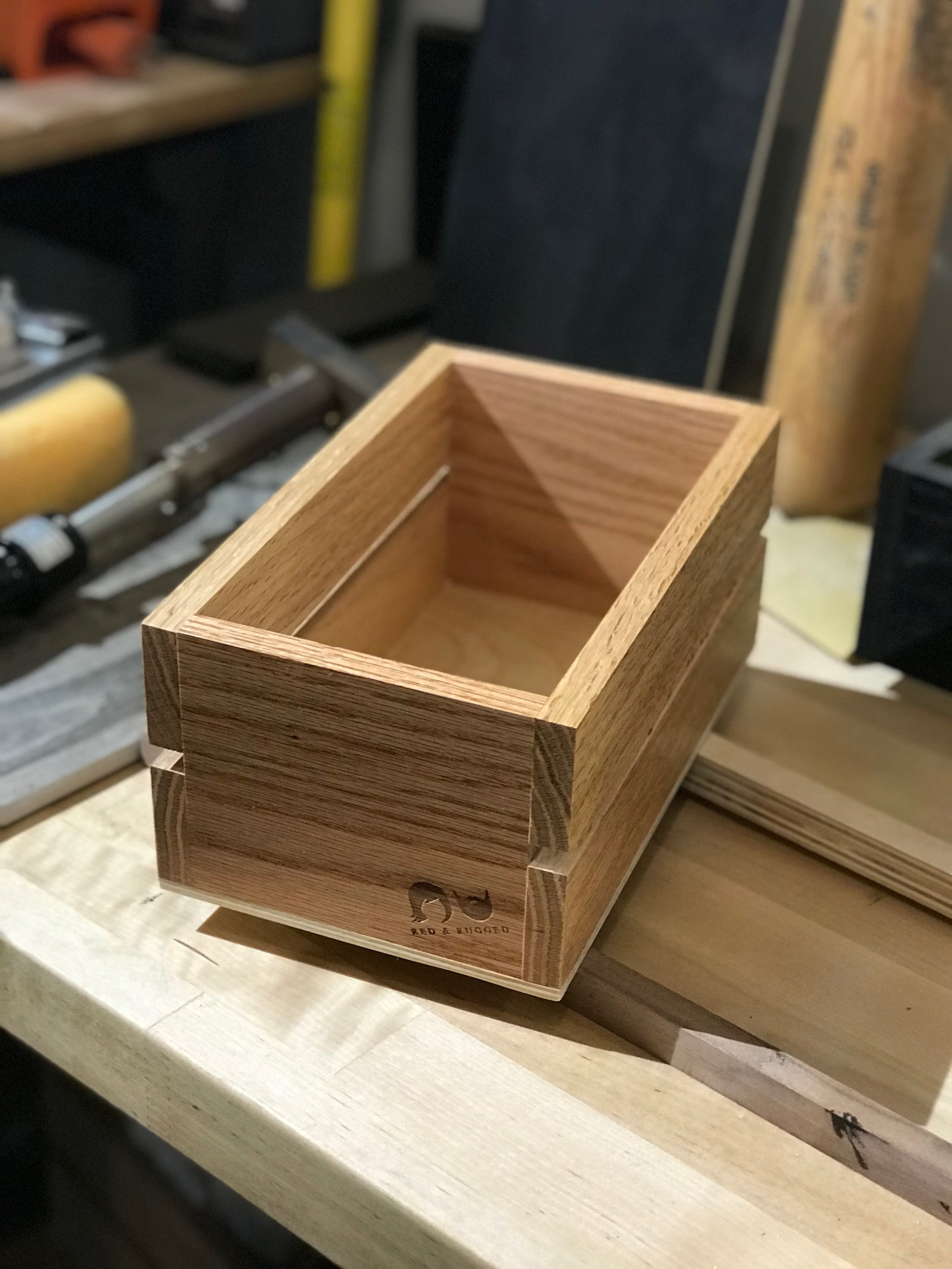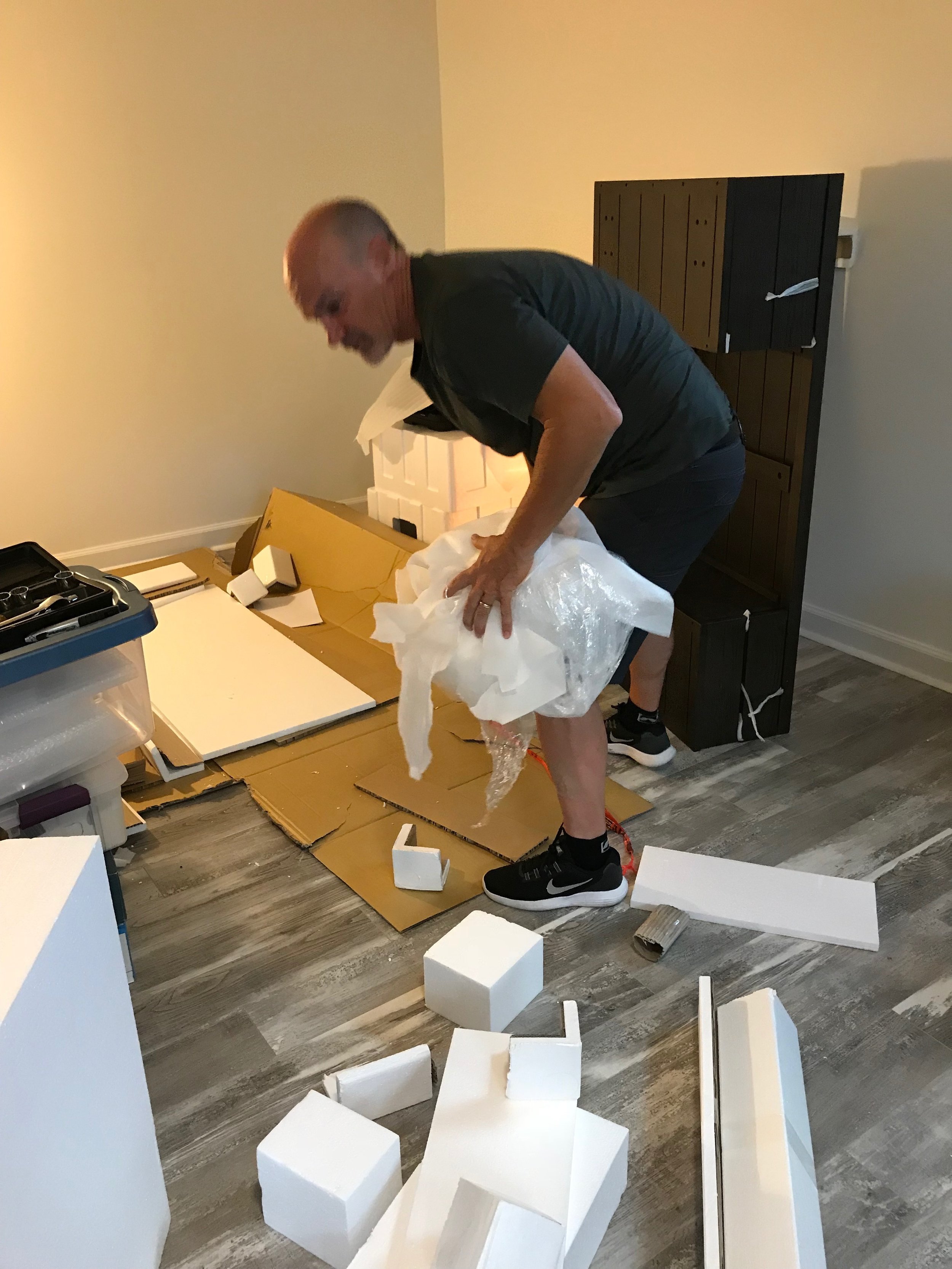Tips We've Learned Creating an Efficient Workshop
/Running a workshop that deals in custom gift box orders requires being super-efficient since each order can involve different sizes, accents and wood stains. For example, we’ve worked to be strategic in the number and size of gift boxes offered, however, because the hardware accent can change, it means we go from offering a few combinations to many. Ditto on the cutting board possibilities. Options require process and a plan, and don’t allow for wasted time looking for tools, making room for wood pieces and finding the right hardware inventory.
Here are two points we consider important as we deliver on customer timelines:
1. Stay sharp. We’ve created a sharpening schedule for all the blades and bits. We use all hardwoods for our gift boxes which means the length of time between sharpening the blades is shorter than for those who use soft woods (red oak vs pine). The sharper the blades, the less sanding required, the faster the process. The blades are on a rotating schedule, making sure the ones in use perform at their best, while others get sharpened at the same time. Router bits, used for the gift box edging, require the same type of attention and sharpening schedule.
2. Get organized for production. We’re often working on multiple projects simultaneously; creating cutting boards, staining boxes, and finishing tablescapes. This means three different processes are in the works. When you require drying time, cutting time and finishing time – all at once - the work stations can get crowded quick, and meeting customer delivery dates means production schedules need to be seamless. You can’t have the clamps that hold each unique wood piece for cutting boards out in the same area where the gift box pieces need to be stained. If you’re unorganized and spend hours cleaning up benches and moving tables around for the next step in each project, you’ve wasted a lot of valuable time. And there’s no rushing things like drying time. It’s like waiting for water to boil. Endless if you’re in a hurry.
Efficiency in the workshop isn’t complicated, however, it does require attention to detail and thoughtful planning. (It’s an evolving process too, read more of our early lessons.) Delivering quality craftsmanship is as much about the tools as it is about the skill required to use them.





























